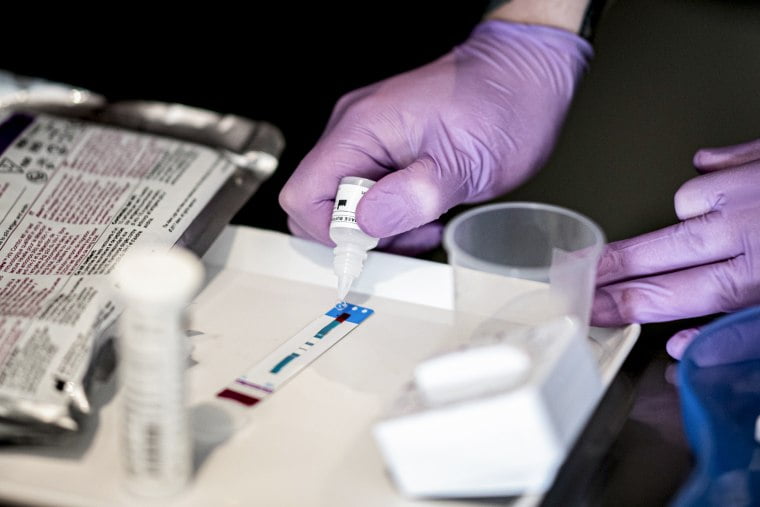Doctors are calling for increased conversations on sexual health with older adults as a result of this development.
In Short
- Rising sti rates among older adults.
- Lack of sexual health conversations in this age group.
- Causes and challenges identified by medical experts.
- Urgency for healthcare providers to address safe sexual behavior.
TFD – Discover the urgent need for increased conversations on sexual health among older adults as doctors raise concerns about rising STI rates in the elderly population. Stay informed and take proactive steps for better health.

Among older persons, sexually transmitted illnesses are on the rise.
Data from the Centers for Disease Control and Prevention show that during the 10-year period from 2012 to 2022, the rates of syphilis, gonorrhea, and chlamydia among adults 55 and older more than doubled in the United States.
Throughout those ten years, the number of cases of syphilis among adults 55 and older climbed seven-fold, while incidences of gonorrhea and chlamydia more than quadrupled.
Doctors and older persons are failing to recognize the risks of sexually transmitted infections (STIs) in this age range, according to a presentation scheduled for this Thursday as part of the pre-event for the European Congress of Clinical Microbiology and Infectious Diseases, which takes place next month.
Author of the presentation and medical professor at the Medical University of Warsaw Justyna Kowalska stated, “We talk about smoking, we talk about diet, exercise, so many things, and not about sex at all.”
The problem is not exclusive to the US. According to surveillance statistics released in 2022, among adults 45 years of age and older, STI diagnoses increased by 22% between 2014 and 2019. The most prevalent was chlamydia, which was followed by gonorrhea.
Kowalska identified a few potential causes of the rise in STI incidence among older persons.
One reason is that, in comparison to previous generations, individuals are living longer and leading more active lives into their 60s, 70s, and 80s. And that includes sex for many. According to a 2018 AARP and University of Michigan survey, 40% of adults between the ages of 65 and 80 engage in sexual activity, and almost two thirds say they are interested in having sex.
Older women’s sexual drive can be prolonged with hormone replacement treatment, which can address menopause symptoms; older men can maintain their sexual activity with the help of erectile dysfunction medications like Viagra.
However, Matthew Lee Smith, an associate professor at the Texas A&M School of Public Health, speculates that older persons might not have received the same kind of sex education that is given to youngsters nowadays.
According to Smith, who specializes in behavioral health risks in older persons, “traditional school wasn’t really doing sexual education very formally back in the ’30s, ’40s, and ’50s.”
Older adults are not as knowledgeable about STI symptoms, prevention, and transmission as younger adults are, according to Smith’s research.
According to him, senior persons frequently have no desire to talk about their sexual lives with friends or family members, and doctors can be reluctant to ask their elderly patients about their sexual activity.
Smith remarked, “Nobody wants to think about grandma doing this.” “You’re not going to question grandma about her condom use, and that’s part of the issue because everyone has the right to intimacy, regardless of age.”
According to Smith, erectile dysfunction or a lack of dexterity in certain older men may make it difficult for them to use condoms.
Furthermore, he continued, a lot of elderly folks got married earlier than is customary these days and only had one sexual partner before getting divorced or being widowed. Smith stated that since pregnancy is not a concern, some people might not think to use a condom.
There are also chances for new sexual partners in nursing homes. Sexual activity was prevalent at nursing homes, which frequently had a higher proportion of female residents than male, according to the findings of a 2016 U.S. survey of nursing facility directors.
“There’s a partner gap in the heterosexual, older adult community: Women live longer than men and make up a larger proportion of the population than men,” Smith explained. “Partner sharing and having multiple partners are what it can often lead to.”
While STIs can affect persons of any age, medical professionals noted that older adults may find it more difficult to recover from infections or may be more vulnerable to getting them in the first place.
“The immune system is weaker, so you can get an infection easier, but there’s other physical things related to just sexual intimacy that make one more susceptible,” said Ethan Morgan, an assistant professor of epidemiology at The Ohio State University College of Nursing. Among women who are postmenopausal, for instance, the vaginal lining is more prone to tearing, which makes it easier for an infection to occur.
The experts emphasized that healthcare providers should talk to elderly people more effectively about safe sexual behavior.
Smith stated, “We want the best life for them, but we also want it to be safe.”
Conclusion
As STI rates climb among older adults, it’s crucial for healthcare providers to prioritize conversations on sexual health. Let’s work together to ensure a safer and healthier future for our elderly population.
Connect with us for the Latest, Current, and Breaking News news updates and videos from thefoxdaily.com. The most recent news in the United States, around the world , in business, opinion, technology, politics, and sports, follow Thefoxdaily on X, Facebook, and Instagram .
